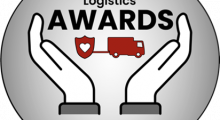Headquartered in Irvine, Calif., Aspen Medical Products is a leading designer, developer and marketer of spinal orthotics for the global healthcare industry. To support continued growth, the company upgraded its labeling system to integrate with its enterprise resource planning (ERP) system, eliminate manual entry and ensure compliance.
According to Israel Lopez, planning manager for Aspen Medical Products, the company was looking for a labeling system that could better manage labels, not just design and print them. This was particularly important following expanded distribution in international markets. With its former labeling system, the company had to rely on manual lookups and operator entry to designate “country of origin” on each product label. This process was time consuming and error prone.
“With our former labeling process, we had a lot of production stoppages,” Lopez says. “Our IT labeling infrastructure simply wasn’t able to cooperate with our ERP system.”
The ideal solution would address current labeling issues as well as provide support for a global, multi-user labeling environment—more than 40 different employees around the world needed to access and print desired labels. The company also sought to efficiently serve a lean-staffed label design environment; four employees are responsible for managing labels for more than 350 different products.
The new browser-based, integrated label management system (Teklynx) is a stand-alone labeling system that could be integrated with the current ERP system as well as any ERP system the company might transition to in the future. Global users now print from a central source using standard templates housed and centrally controlled. This provides control over revisions and enables the company to push changes to templates without disruptions.
“In the past, when our contractors in China would make a label, we would send out label copy and ask them to generate a label using their own system and send it back to us,” explains Lopez. “This back and forth label creation and approval process could take weeks.”
In addition to improved labeling accuracy and reduced label approval time, the company has improved compliance with medical device regulations.
“Five years ago, we averaged three corrective actions a week due to labeling errors,” Lopez says. “Now that our operators simply have to scan bar codes, I haven’t seen a corrective labeling action all year.”
Article topics







